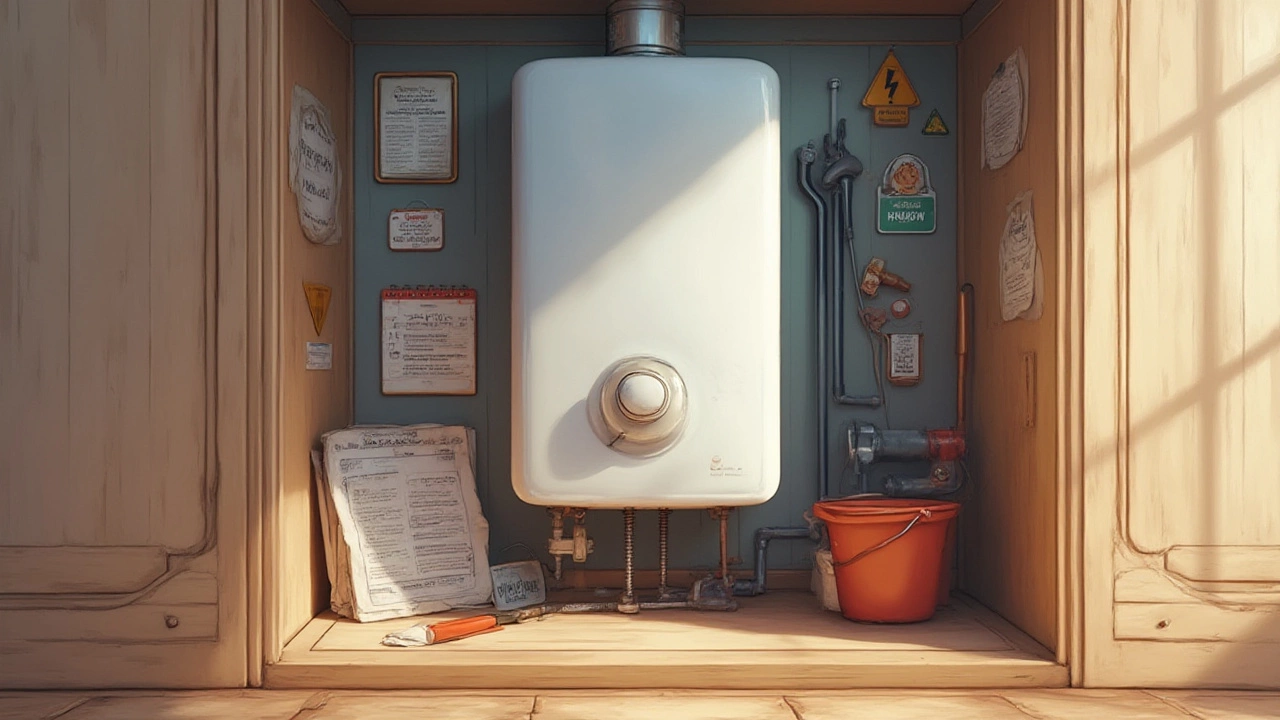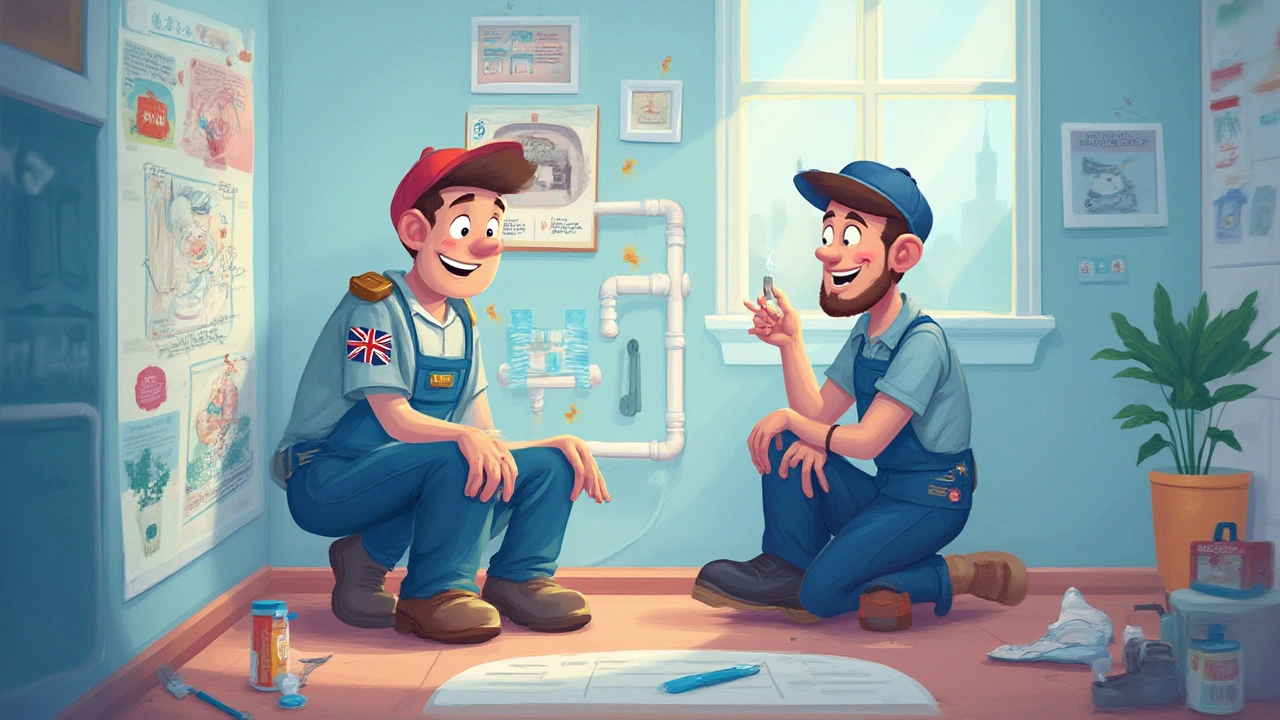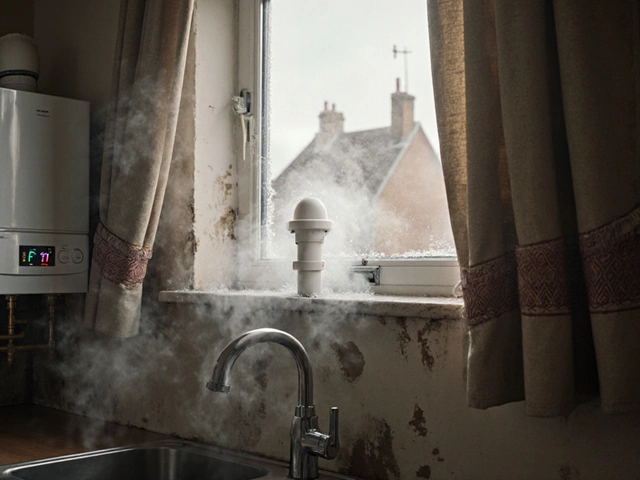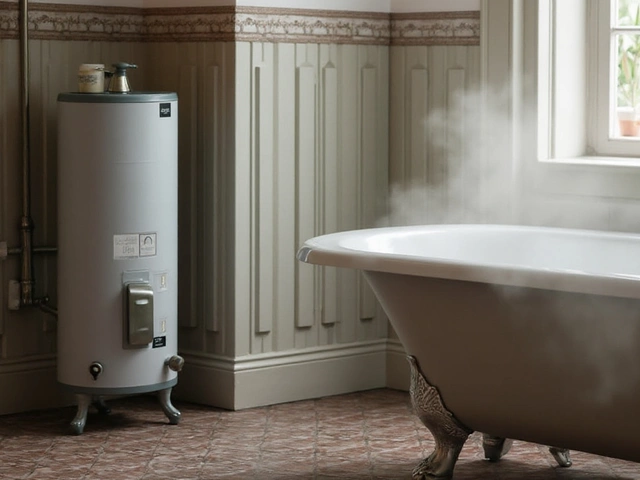Sediment build-up can silently turn your cozy home into a series of cold showers. Most people don't think much about the tank sitting in their airing cupboard—until it starts grumbling, banging, or serving up rusty water. I remember when our flat in Bristol suddenly lost hot water in the middle of December. Turns out, the culprit was simple neglect: our water heater hadn't been flushed in years. Lorelai, not a fan of icy rinses, put her foot down. So, if you've ever wondered how often this task really matters or if it's all just hype, you're in good company. Flushing your water heater isn't just busywork—it's the easiest way to dodge expensive repairs (or a moody partner).
Why Flushing Your Water Heater Matters More Than You Think
Ever heard random pops and bangs coming from your hot water tank? That's not your house settling—it's mineral deposits cooking themselves onto your heater's innards. Most of the UK's water is considered 'hard', especially in areas like Bristol. Hard water is packed with minerals like calcium and magnesium. Letting those build up is like clogging your kettle but on a massive scale. Each time your heater pushes water through all that gunk, it has to work harder, cranking up energy bills and wearing out faster. Even worse, all that sediment can create a layer that traps heat, making the tank overheat or rust out prematurely.
One thing people miss—sediment isn’t just about efficiency. It creates a perfect breeding ground for bacteria, especially in tanks that aren’t set hot enough. Not a lovely thought on a Sunday morning. And while it's rare, Legionella bacteria love lukewarm, sediment-filled water. The NHS actually flags this for at-risk folks (elderly, those with weak immune systems). So, a simple flush isn’t just about clear water—it's about safety.
If you're using a gas water heater, sediment at the bottom acts as insulation, forcing the burner to work overtime. That's why you sometimes hear that kettle-boil noise. For electric heaters, sediment can bury the lower heating element, making it less effective and, over time, causing it to burn out way earlier than expected. Whether you have a combi boiler with a tank or a classic immersion heater, neglecting the flush means more call-outs and more costs. I always tell friends: a ten-minute flush is worth the price of a new heater.
But here's a stat to chew on: According to the UK Energy Saving Trust, a poorly maintained heater can waste up to £130 a year in unnecessary energy bills. That’s easily a weekend escape in Cornwall or a proper dinner with friends. Fixing a heater that's rusted out from within? That can run over £700—or more, if you need emergency repairs.

How Often Should You Actually Flush Your Water Heater?
People want a magic number. Truth is, it depends on your water and the heater’s age. If you live near Bristol or anywhere with hard water, you’ll want to flush your heater at least once a year. Heating element manufacturers and the big boiler brands—Ariston, Worcester Bosch, Vaillant—all say yearly flushing is a good rule, especially after the first year of installation. If you see chalky deposits in your kettle or dishwasher, that’s a red flag that your water heater’s getting the same treatment.
For soft water areas or newer homes with advanced filtration, you can push to every 18–24 months, but don’t leave it any longer. If your tank is older than six years or you’ve never flushed it before, don’t wait. Sediment multiplies every year it’s ignored. Folks with older heaters or families (read: heavy hot water use) should stick to yearly maintenance. It’s like oil changes for a car—skip too many, and problems stack up fast.
Here’s a tip: Always check your manufacturer’s recommendation in the manual. Some newer models are designed with “self-cleaning” features, using turbulence to slow sediment build-up. But even then, most plumbers in the UK still suggest an annual flush to keep things running sweet. One pro in Clifton told me that about 80% of the ‘mysterious’ heater failures he’s called to could have been prevented if clients just flushed the tank. That's a lot of avoidable hassle.
Worried about doing it wrong? Good news: it’s not complicated. I’ve helped mates do it with nothing but a hose, a screwdriver, and a touch of patience. Just remember to turn off the power—nobody wants a shock dance in the utility room. And if you’re ever in doubt or have a really old or suspect tank, don’t be shy about calling in a pro for the first time. It’s better than learning the hard way what an ancient, rust-clogged heating element looks like.

Step-by-Step: Flushing Your Water Heater Like a Pro
A lot of people get nervous the first time. Trust me, if I can do it (with Lorelai reminding me not to flood the kitchen), so can you. Here’s the hands-down easiest way, whether your unit’s gas or electric.
- Turn off the power—either shut off the circuit breaker for electric models or switch gas heaters to “pilot”/“off.” Never skip this for safety.
- Turn off the cold water supply valve at the top of the tank. It’s usually a blue lever or wheel.
- Let your hot taps run for a couple of minutes to take heat and pressure off.
- Connect a sturdy garden hose to the drain valve near the bottom of the tank. Run the hose outside or into a big drain. Make sure the end is secure—sediment clogs gutters fast!
- Open the drain valve (careful, water may be very hot) and watch as the water flows out, taking cloudiness and muck with it.
- Once it slows, turn the cold water supply back on for 10-20 seconds to stir up more sediment. Let that empty too.
- Repeat this ‘flush’ a few times until the water runs clear. If you’re seeing lots of rust or grit, don’t panic—just keep going.
- Shut the drain valve, detach the hose, and turn the cold supply fully back on.
- Open your nearest hot tap to let air escape while the tank refills. When only water (no hissing), close the tap.
- Turn the electric/gas back on and set the thermostat to your usual temp (60°C is best—hot enough for safety, cool enough for savings).
That’s it. The real magic is in consistency—not waiting until your hot water runs brown or sounds like a popcorn machine. Routine flushing keeps minerals out, stops rust, and means you rarely need us repair folks except for a proper annual check-up.
If your heater refuses to drain or you notice leaks, corrosion around fittings, or chunks of debris even after multiple flushes, this is your cue to call a pro. Some older tanks get so caked up inside that a service visit is safer than risking a snapped valve (I’ve been called in after a DIY disaster or two, and it's never pretty). If your water’s smelling like rotten eggs, bacteria may have settled—a deep flush with a little hydrogen peroxide (never bleach) can help, but make sure to rinse thoroughly before restoring power.
Between flushes, listen for changes. A sudden drop in water temp, slow recovery times, or metallic tastes are all signs your heater needs TLC sooner rather than later. Think of it this way: every flush is less money thrown at emergency call-outs, and more hot water for Sunday baths or post-football showers. Lorelai's rule: If you can't remember your last flush, it's time for one now.
And for anyone keeping score: water heater flushing isn’t just some old-wives’ tale. Big studies done by British Gas and industry groups back it up—regular maintenance is the best way to protect your system, save money, and keep the “brrrr” out of your mornings.
So next time you're sipping tea and the tank burbles to life, you’ll know exactly what it's telling you: time for a flush, a happier tank, and a much warmer home.




